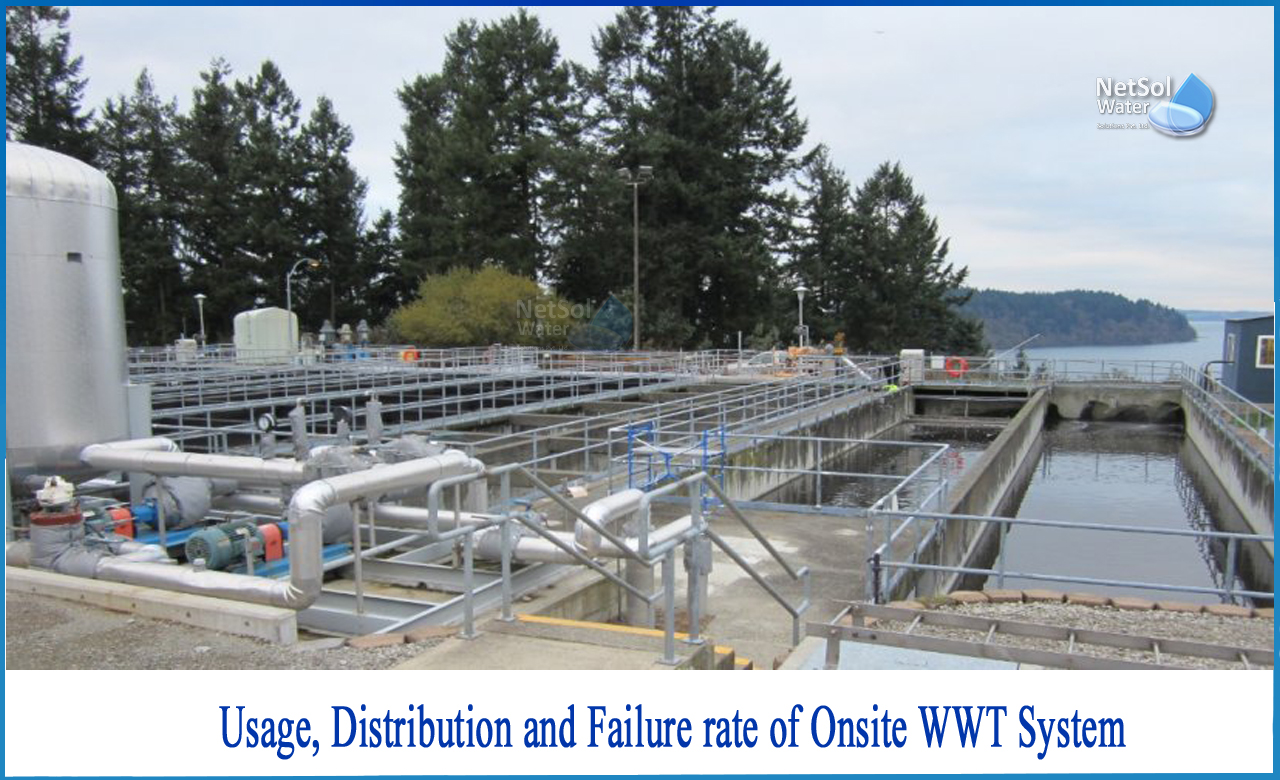What is Usage, Distribution and Failure rate of Onsite WWT System?
On-site wastewater treatment systems (OWTSs) have progressed from the common pit privies of the past to facilities capable of generating disinfected effluent appropriate for human consumption. Although such effluent quality is rarely required, onsite systems' capacity to remove settleable particles, floatable grease and scum, nutrients, and pathogens from wastewater discharges emphasizes its relevance in preserving human health and environmental resources. The usual onsite system in the contemporary age has generally comprised of a septic tank and a soil absorption field, often known as a SWIS (subsurface wastewater infiltration system).
OWTSs can fail for a variety of reasons, including age and hydraulic overloading, as well as design, installation, and maintenance issues.
When many treatment units are built at densities that exceed the ability of local soils to absorb pollution loads, hydraulically operating systems might provide a health and environmental danger. Unless sewage overflow, septage pooling on lawns, or focused monitoring that reveals health hazards happens, system owners are unlikely to repair or replace old or otherwise malfunctioning systems. Because onsite system pollution of ground and surface water is seldom confirmed by focused monitoring, total failure rates and onsite system effects over time are likely to be far greater than historical data suggest.
There are still a number of systems (e.g., cesspools, drywells) that rely on antiquated and underperforming technology, and many of them are categorized as failed systems. Typical system failure studies exclude systems that may be polluting surface or ground water, a scenario that may frequently only be detected by site-level monitoring.
Cause of failure_
1: Un-pumped, sludge-filled tanks generate blocked absorption fields. Hydraulic overloading caused by increasing occupancy and water demand after the installation of new water lines to replace wells and cisterns are common reasons of failure.
2: Water quality issues in lakes, coastal bays, and estuaries can be caused by full-time or heavy use of vacation houses supplied by systems established under obsolete techniques or meant for part-time occupancy.
3: Contamination issues can also arise as a result of landscape changes, changes to the infiltration field surface, or the usage of outmoded technology.
What is behind inadequate onsite wastewater system management?
In most situations, the lack of a feasible oversight program that covers all aspects of planning, design, siting, permitting, installation, operation, maintenance, and monitoring is the primary cause of poor onsite wastewater system management.
Low population densities, low incomes, weak management entities, a history of neglect, and other specific characteristics might also obstruct the creation of comprehensive management plans.
What can we offer?
Netsol Water collaborates with a wide range of international organizations to tackle complicated problems by strategically integrating modern treatment technology with practical solutions. We can provide a good framework of onsite wastewater treatment systems, collaborated with watershed conservation measures.
Netsol Water is Greater Noida-based leading water & wastewater treatment plant manufacturer. We are industry's most demanding company based on client review and work quality. We are known as best commercial RO plant manufacturers, industrial RO plant manufacturer, sewage treatment plant manufacturer, Water Softener Plant Manufacturers and effluent treatment plant manufacturers. Apart from this 24x7 customer support is our USP. Call on +91-9650608473, or write us at enquiry@netsolwater.com for any support, inquiry or product-purchase related query.



